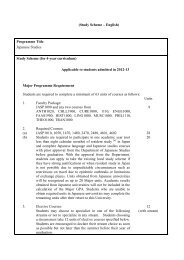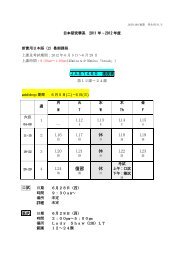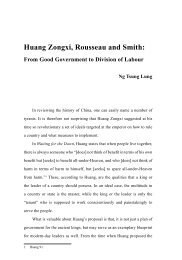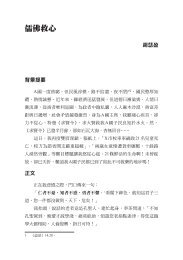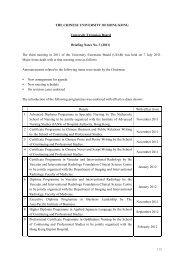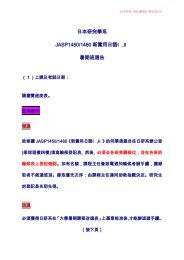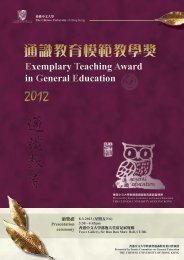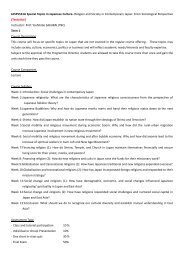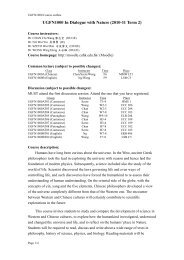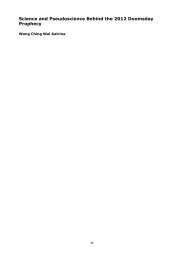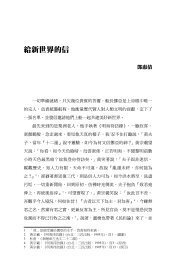ä¸è¼å ¨æ¸ - The Chinese University of Hong Kong
ä¸è¼å ¨æ¸ - The Chinese University of Hong Kong
ä¸è¼å ¨æ¸ - The Chinese University of Hong Kong
Create successful ePaper yourself
Turn your PDF publications into a flip-book with our unique Google optimized e-Paper software.
210 Teaching and Learning in General Education<br />
methodology should know that even science can “only make predictions<br />
about the future based on past or current information.” <strong>The</strong> result is simply<br />
weird: the method is both scientific as well as “super-scientific”!<br />
When teaching fallacy analysis, my central message to students is how<br />
common fallacious thinking is in daily life and the significance <strong>of</strong> avoiding<br />
it. Most <strong>of</strong> the common specific fallacies (e.g., hasty generalizations) are<br />
readily classifiable into a four-division general framework, constituted <strong>of</strong><br />
the components <strong>of</strong> the “fallacy <strong>of</strong> inconsistency,” “fallacy <strong>of</strong> irrelevance,”<br />
“fallacy <strong>of</strong> insufficiency,” and the “fallacy <strong>of</strong> inappropriate presumption.” <br />
<strong>The</strong> four general concepts <strong>of</strong> inconsistency, irrelevance, insufficiency,<br />
and inappropriate presumption are themselves useful critical concepts for<br />
identifying and analyzing fallacy in a general preliminary manner. Below<br />
is a brief examination <strong>of</strong> a real-life example in which the specific fallacy <strong>of</strong><br />
strained analogy is committed (or, at least, is seriously suspected <strong>of</strong> having<br />
been committed). <br />
In 1998, the Master Settlement Agreement saw the major U.S. tobacco<br />
companies agree to pay $246 billion over 25 years to settle lawsuits filed<br />
by U.S. state governments accusing them <strong>of</strong> damaging public health. Later,<br />
some people raised the accusation that U.S. fast-food manufacturers should<br />
be the next target, since they also make products that are harmful to public<br />
health. <strong>The</strong> argument may be presented in this standard form:<br />
<br />
<br />
I learned this framework from Dr. Tien-ming Lee’s works. Again, he would not necessarily<br />
endorse my interpretation.<br />
This example is adopted from Baggini (2008, p. 260). <strong>The</strong> fallacies associated with<br />
analogical arguments have more than one dimension. <strong>The</strong> one I will discuss here is most<br />
suitably classified under the fallacy <strong>of</strong> inconsistency. <strong>The</strong> reason for this is that the argument<br />
to be criticized below is based on a requirement for consistency (as expressed by Premise #1<br />
below), which will be shown to be one that cannot be fulfilled. Also, it should be noted<br />
that another common dimension is concerned with irrelevance — irrelevance between the<br />
analogy made and the conclusion drawn.



